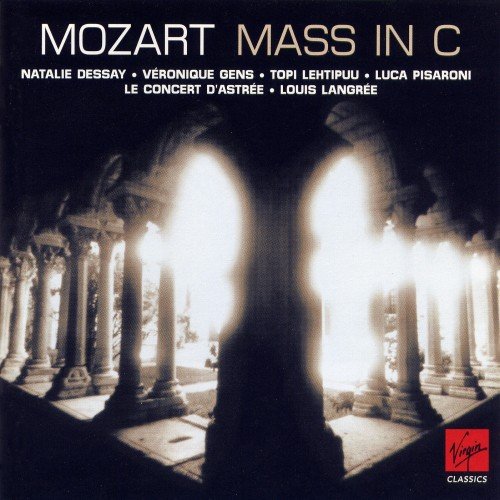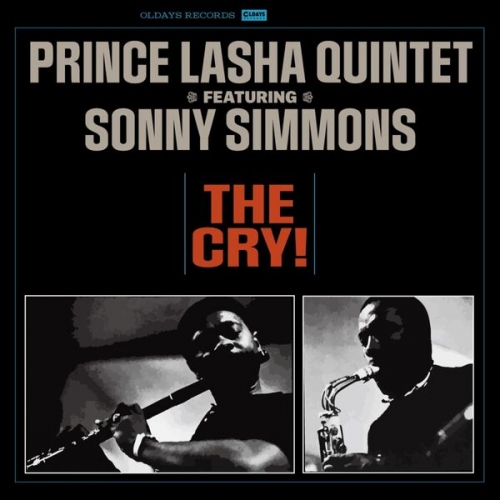Le Concert d'Astree, Louis Langree - Mozart - Mass In C Minor (2006)

Artist: Le Concert d'Astree, Louis Langree
Title: Mozart - Mass In C Minor
Year Of Release: 2006
Label: Virgin Classics
Genre: Classical, Sacred
Quality: FLAC (image+.cue,log,scans)
Total Time: 54:01
Total Size: 292 Mb
WebSite: Album Preview
Tracklist: Title: Mozart - Mass In C Minor
Year Of Release: 2006
Label: Virgin Classics
Genre: Classical, Sacred
Quality: FLAC (image+.cue,log,scans)
Total Time: 54:01
Total Size: 292 Mb
WebSite: Album Preview
Wolfgang Amadeus Mozart (1756-1791)
Mass in C minor K427, revised by L. Langrée
Masonic Funeral Music K477
1-13. Mass No. 17 for soloists, chorus & orchestra in C minor (fragment, "Great Mass"), K. 427 (K. 417a) [rev. Louis Langree]
14. Maurerische Trauermusik (Masonic Funeral Music), for orchestra in C minor, K. 477 (K. 479a)
Performers:
Natalie Dessay, Véronique Gens - soprano's
Topi Lehtipuu - tenor
Luca Pisaroni - bass
Le Concert d'Astrée
Louis Langrée, conductor
First things first: if you're seeing a picture of this disc on the site of an online retailer, be aware that it contains the Mass in C minor, K. 427, not the "Mass in C," promised by the cover, which would more likely be the "Coronation" Mass in C major, K. 337. It is always a shame when designers are given power of diktat over content editors. The so-called "Great" Mass in C minor is one of Mozart's most ambitious and most problematical works. There was no known immediate stimulus for its composition. Did Mozart begin writing it out of one of his rare religious impulses, on the occasion of his marriage to his bride Constanze? Out of his growing devotion to Freemasonry? Was it his first major exercise in applying the lessons in Bach-style counterpoint he had been receiving at the intellectual salons of the Baron van Swieten in Vienna? Or was it meant as a showpiece for singer Constanze with its killer soprano arias? It was all of these things and none of them, for Mozart never finished the mass. There is no Agnus Dei; the Credo breaks off with Christ's incarnation; and chunks of part-writing are missing from the incomplete Credo, the Sanctus, and the Benedictus. The mass was nevertheless performed in its incomplete state in 1783. It was unlike the fertile-minded Mozart to abandon partially completed works, and the various completions that have been proposed, going back to 1840, offer good occasions for contemplation on why he might have done so in this case.
The most distinctive feature of this French recording, beautifully done at the Church of Notre-Dame-du-Liban in Paris, is its new partial completion (he does not add any music for the sections Mozart didn't even begin) by conductor Louis Langrée, familiar to U.S. audiences from his appearances at New York's Mostly Mozart Festival. And the most distinctive feature of Langrée's score is his addition of trumpets, trombones, and tympani to the opening choral movement of the Credo. Mozart's score does not mention or hint at any, but Langrée notes that they appear in the Credo in his other masses, as a way of giving heft to the rather wordy Credo and placing its statement of the Christian mysteries at the center of the musical statement. Langrée also omits horns from the following "Et incarnatus est" aria -- most attempts at completion have added horn parts to two blank staves in Mozart's score. The soprano solo part seems a bit unsupported in this version. But the chief benefit of Langrée's blaring "Credo in unum deum" is that it provides a counterweight to the explosive Gloria opening and its towering final "Cum sancto spiritu" fugue, which in turn balanced the deep seriousness of the opening Kyrie. And taken together in this form these movements outline a work larger in scope and sheer force than anything else Mozart wrote. The big choruses are matched by the highly ornate arias and ensembles that come between them, but they seem slightly disconnected from them. Perhaps this is why Mozart dropped the work -- it went even beyond the stuffed-to-the-max quality of the contemporary work it shares the most with, the opera Die Entführung aus dem Serail, and for once in his life he wasn't sure where to go next. Add a final Credo "Cum sancto spiritu" fugue on the scale this completion seems to demand, and he'd be in Beethoven territory.
At any rate, Langrée devises a lush performance that complements his vision of the piece. The historical-instrument orchestra and choir Le Concert d'Astrée are both beefed up with additional members, and you get to hear not one but two powerhouse French sopranos, Natalie Dessay and Véronique Gens, deliciously intertwining their voices in the Benedictus and balanced by the equally talented Topi Lehtipuu and Luca Pisaroni in the sparser tenor and bass parts. The French sometimes have a way of making Mozart sound like Fauré -- not that there's anything wrong with that -- and despite the historical instruments that tendency is on vivid display here. Bottom line: this is an intense, sensuous, maybe dangerously high-cholesterol C minor mass that is fully engaged with the unique qualities of the work. The recording is nicely rounded out by the much rarer Masonic Funeral Music for orchestra, K. 477; its gentle somberness brings the listener back to Earth.
The most distinctive feature of this French recording, beautifully done at the Church of Notre-Dame-du-Liban in Paris, is its new partial completion (he does not add any music for the sections Mozart didn't even begin) by conductor Louis Langrée, familiar to U.S. audiences from his appearances at New York's Mostly Mozart Festival. And the most distinctive feature of Langrée's score is his addition of trumpets, trombones, and tympani to the opening choral movement of the Credo. Mozart's score does not mention or hint at any, but Langrée notes that they appear in the Credo in his other masses, as a way of giving heft to the rather wordy Credo and placing its statement of the Christian mysteries at the center of the musical statement. Langrée also omits horns from the following "Et incarnatus est" aria -- most attempts at completion have added horn parts to two blank staves in Mozart's score. The soprano solo part seems a bit unsupported in this version. But the chief benefit of Langrée's blaring "Credo in unum deum" is that it provides a counterweight to the explosive Gloria opening and its towering final "Cum sancto spiritu" fugue, which in turn balanced the deep seriousness of the opening Kyrie. And taken together in this form these movements outline a work larger in scope and sheer force than anything else Mozart wrote. The big choruses are matched by the highly ornate arias and ensembles that come between them, but they seem slightly disconnected from them. Perhaps this is why Mozart dropped the work -- it went even beyond the stuffed-to-the-max quality of the contemporary work it shares the most with, the opera Die Entführung aus dem Serail, and for once in his life he wasn't sure where to go next. Add a final Credo "Cum sancto spiritu" fugue on the scale this completion seems to demand, and he'd be in Beethoven territory.
At any rate, Langrée devises a lush performance that complements his vision of the piece. The historical-instrument orchestra and choir Le Concert d'Astrée are both beefed up with additional members, and you get to hear not one but two powerhouse French sopranos, Natalie Dessay and Véronique Gens, deliciously intertwining their voices in the Benedictus and balanced by the equally talented Topi Lehtipuu and Luca Pisaroni in the sparser tenor and bass parts. The French sometimes have a way of making Mozart sound like Fauré -- not that there's anything wrong with that -- and despite the historical instruments that tendency is on vivid display here. Bottom line: this is an intense, sensuous, maybe dangerously high-cholesterol C minor mass that is fully engaged with the unique qualities of the work. The recording is nicely rounded out by the much rarer Masonic Funeral Music for orchestra, K. 477; its gentle somberness brings the listener back to Earth.








